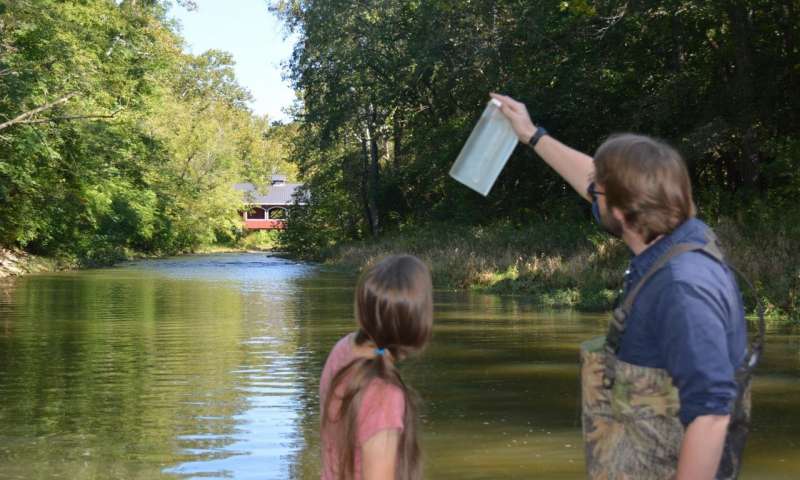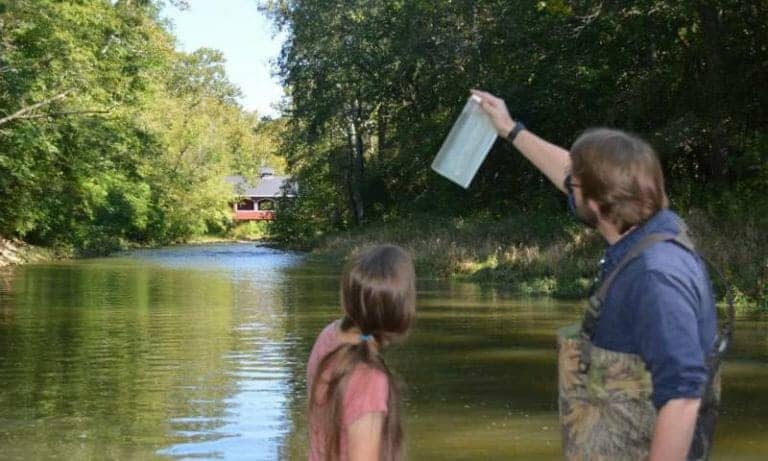Photo: Graduate students Heather Luken and Tanner Williamson collect water samples from an automated sampler on Four Mile Creek. The autosampler collects a water sample from the stream every seven hours, and stores 24 samples in the carousel of bottles shown here. Credit: Carrie Ann Sharitt
In the early 1990s, Acton Lake in southwestern Ohio had a muddy problem. Large amounts of sediment from nearby farms were entering the lake’s watershed. These sediments traveled through streams draining the landscape and were filling up the lake.
So, the USDA gave local farmers incentives to change some of their farming practices. One of these practices was conservation tillage, in which the soil is plowed less often. That can reduce sediment runoff.
A new study examines how the switch to conservation tillage has impacted Acton Lake over the past decades. From 1994 to 2014, the researchers measured concentrations of suspended sediment, nitrogen, and phosphorus in streams draining into Acton Lake.
"We find that short-term trends in water quality may not reflect long-term changes," says study co-author Michael Vanni.
Tracking changes in water quality over the long term is vital, says Vanni, a biologist at Miami University, Ohio. "We don’t have a lot of […]
Full article: Long term ag change impacts stream water quality
More about watersheds:
The Watershed Game challenges, informs decision-makers
Watershed Planning Program (WPP) — Massachusetts
Watershed group’s “blanket” approach to erosion control
Pennsylvania watershed contaminated with radioactive material and endocrine-disrupting chemicals
Stanford study: changing scope of Native American groundwater rights
Should Rivers Have Rights? A Growing Movement Says It’s About Time



